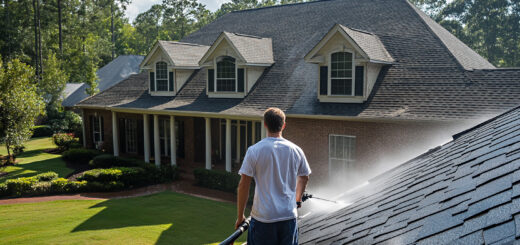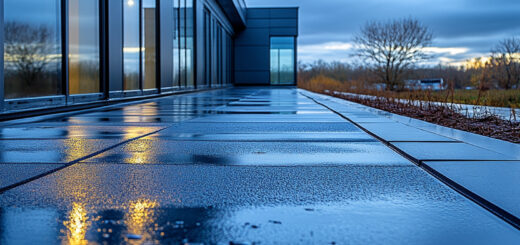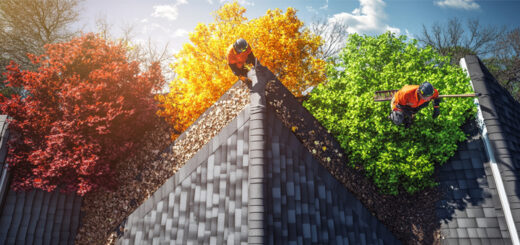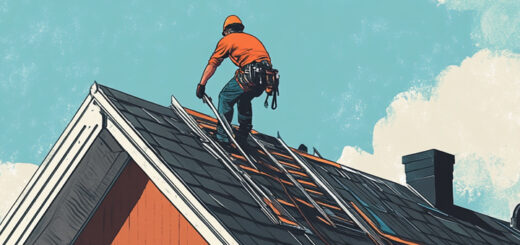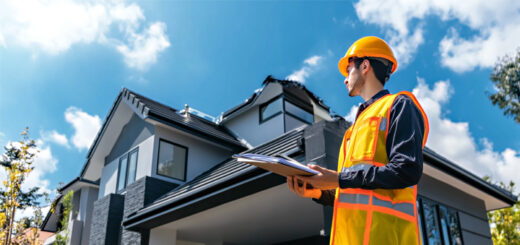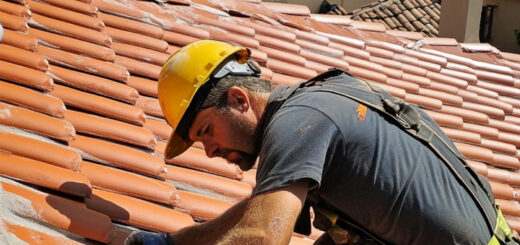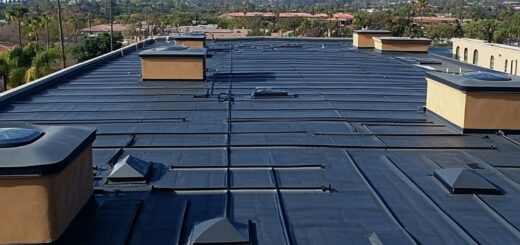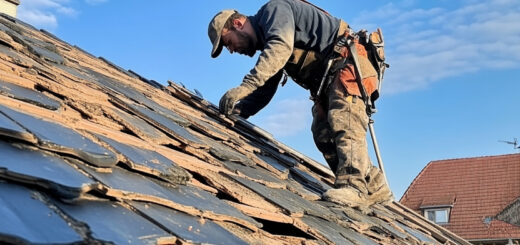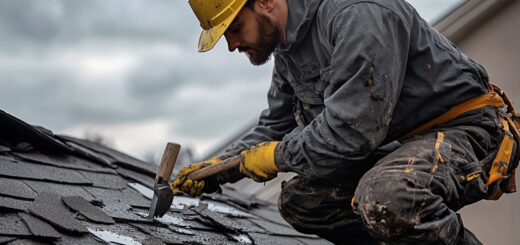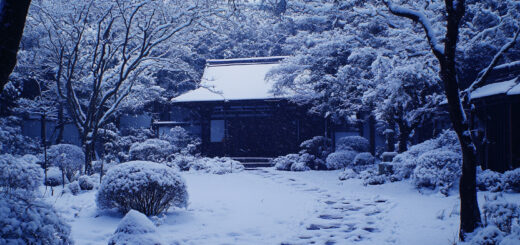10 Signs Your Roof Needs Immediate Repair
A well-maintained roof is crucial for the overall health and safety of any home. Understanding the importance of roof maintenance can save homeowners from costly repairs and potential hazards down the line. Regular inspections and timely repairs are essential to prevent roof damage, which can lead to leaks, mold growth, and structural issues if left unaddressed.
Home protection begins at the top, quite literally. The roof acts as the first line of defense against harsh weather conditions such as rain, snow, wind, and extreme temperatures. By investing in regular maintenance and addressing minor issues promptly through roof repair benefits like sealing leaks or replacing damaged shingles, homeowners can extend the lifespan of their roofs significantly.
Moreover, timely roof repairs enhance energy efficiency by ensuring that insulation remains intact and effective. This not only contributes to a comfortable living environment but also helps reduce energy bills over time. In summary, staying proactive with roof maintenance is a wise decision that safeguards your home’s integrity while providing peace of mind for years to come.
Visible Water Stains on Ceilings or Walls
Visible water stains on ceilings or walls are often a telltale sign of roof leaks, and it’s crucial to address them promptly to prevent further damage. These stains typically appear as discolored patches, ranging from light yellow to dark brown, depending on the severity and duration of the leak. They indicate that moisture has penetrated through the roofing material, seeping into your home’s interior.
Recognizing these water damage signs early can save homeowners from costly repairs down the line. When you spot ceiling stains, it’s essential to investigate their source immediately. Moisture issues not only compromise the structural integrity of your home but also create an ideal environment for mold growth, which can pose health risks.
To effectively manage this problem, consider conducting a thorough inspection of your roof and attic space. Look for missing shingles, damaged flashing, or blocked gutters that could be contributing to leaks. Addressing these issues swiftly will help mitigate further water intrusion and preserve the safety and comfort of your living space.
Missing or Damaged Shingles: A Major Red Flag
When it comes to maintaining the integrity of your roof, missing or damaged shingles are a major red flag that should not be ignored. Shingles serve as the first line of defense against weather elements, and any compromise in their condition can lead to significant issues down the road. Missing shingles create gaps in your roofing system, allowing water to seep into underlying layers and potentially causing leaks or structural damage.
Damaged shingles, whether cracked, curled, or blistered, also pose a threat. They may not effectively repel water or withstand strong winds, leading to further deterioration of your roof. It’s essential to regularly inspect your roof for these signs and address them promptly through shingle repair or replacement.
Selecting high-quality roofing materials can enhance the longevity and resilience of your roof. Investing in durable shingles not only protects your home but also saves you from costly repairs in the future. If you notice any missing or damaged shingles on your roof, it’s crucial to consult with a professional roofing contractor who can assess the situation and recommend appropriate solutions before minor issues escalate into major problems.
Sagging Roof Deck and Structural Concerns
A sagging roof deck is more than just an aesthetic issue; it can be a sign of serious structural integrity problems that need immediate attention. When the roof deck begins to sag, it often indicates underlying issues with the roof’s support system. These problems can arise from various factors, including water damage, inadequate construction practices, or the natural aging of materials.
Water damage is a common culprit for sagging roofs. When moisture infiltrates the roofing materials, it can weaken the structure and lead to rot and decay in wooden supports. Over time, this degradation compromises the roof’s ability to bear weight and maintain its shape.
Another factor contributing to a sagging roof deck could be insufficient support during construction. If the original builders did not use enough trusses or beams to support the roofing material adequately, over time, this lack of support will manifest as a visible sag.
Addressing these structural integrity issues promptly is crucial to prevent further damage and potential safety hazards. If you notice any signs of a sagging roof deck, it’s advisable to consult with a professional roofing contractor who can assess the situation accurately and recommend appropriate repairs or reinforcements. By taking proactive measures early on, you can ensure your home remains safe and structurally sound for years to come.
Granules in Gutters: What They Indicate About Your Roof’s Health
When you notice granules accumulating in your gutters, it’s a clear sign that your roof may be trying to communicate something important about its condition. Roof granules in gutters are often an indicator of aging shingles, which is a natural part of the roof’s lifecycle. As shingles age, they begin to lose their protective granules due to weathering and exposure to the elements.
These granules play a crucial role in protecting your roof from UV rays and adding fire resistance. Therefore, their presence in your gutter debris can signal that the shingles are nearing the end of their effectiveness. While some loss is normal over time, excessive amounts could suggest that it might be time for a closer inspection or even replacement of your roofing material.
Understanding these signs early can help prevent more severe issues down the line, such as leaks or structural damage. Regularly checking for gutter debris causes like granule accumulation can aid homeowners in maintaining their roofs’ health and extending its lifespan effectively.
Increasing Energy Bills: A Hidden Indicator of Roof Issues
One of the often-overlooked indicators of roof issues is an unexpected increase in energy bills. When your heating or cooling costs start to climb without a clear reason, it might be time to inspect your roof. Wasted energy costs can frequently be traced back to insulation problems or heat loss through the roof, both of which are common signs that your roofing system may need attention.
Insulation plays a critical role in maintaining the temperature inside your home. If there are gaps, cracks, or other forms of damage in your roof’s structure, it can lead to significant heat loss during the winter and make it harder to keep cool air inside during the summer. This inefficiency forces your HVAC system to work overtime, driving up energy consumption and, consequently, your utility bills.
By addressing these potential roof issues promptly, you not only improve the comfort level within your home but also protect yourself from escalating wasted energy costs. Regular inspections and maintenance can help identify these problems early on and prevent costly repairs down the line.
Mold and Mildew Growth Inside the House
Mold and mildew can be unwelcome guests in any home, often thriving in damp and poorly ventilated areas. Recognizing mold growth signs indoors is crucial for maintaining a healthy living environment. Common indicators include musty odors, discolored patches on walls or ceilings, and increased allergy symptoms among residents.
Mildew causes are typically linked to moisture accumulation, which can result from various sources such as high humidity levels, inadequate ventilation, or water leaks. Leaks are particularly insidious as they provide the perfect conditions for interior mold growth. Whether from a leaky roof, plumbing issues, or condensation buildup around windows and doors, these problems need to be addressed promptly to prevent mold proliferation.
Prevention is key when it comes to combating mildew and mold. Ensuring proper ventilation throughout your home can help reduce humidity levels significantly. Additionally, repairing leaks immediately upon discovery will cut off the moisture supply that mold needs to thrive. Regular inspections of areas prone to dampness—such as basements, bathrooms, and kitchens—can also help in early detection of potential issues before they escalate into major problems.
By staying vigilant about these factors and taking proactive measures against moisture buildup, homeowners can effectively minimize the risk of mold and mildew growth inside their houses.
Daylight Peeking Through the Attic: An Urgent Warning Sign
When inspecting your attic, the sight of daylight peeking through can be an urgent warning sign indicating vulnerabilities in your roof’s structure. These gaps or holes not only allow light to enter but also provide a pathway for moisture, pests, and fluctuating temperatures, which can lead to significant damage over time.
To address these vulnerabilities effectively, it’s crucial to conduct a thorough attic inspection. Start by carefully examining all areas where you notice rays of light filtering through. Pay special attention to the corners and edges of the attic space, as these are common areas where structural issues may arise.
Implementing proper attic inspection tips can help identify potential problems early on. Look for signs of water stains or mold growth around the light spots, as these indicate that moisture has already penetrated your home’s defenses. Additionally, check for any compromised insulation that could affect your home’s energy efficiency.
Addressing these issues promptly by sealing gaps and repairing damaged sections will not only protect your home from further damage but also enhance its overall integrity and energy efficiency. Remember, ignoring even small rays of light in the attic space can lead to larger problems down the road, making proactive maintenance essential for safeguarding your home.
Cracked or Curling Shingles : When Age Shows Its Wear
Cracked or curling shingles are clear indicators that your roof is showing signs of aging and wear. When shingles begin to curl, it often means they have been exposed to moisture over time or have experienced significant temperature fluctuations, causing them to lose their original shape. Curling shingle indications should not be ignored, as they can lead to more serious issues such as leaks and water damage.
Similarly, cracked roofing materials pose significant hazards. Cracks allow water to seep through the protective barrier of your roof, potentially leading to mold growth and structural damage inside your home. The urgency of shingle replacement in these cases cannot be overstated; addressing these problems promptly can prevent costly repairs down the line.
Regular inspections and maintenance are crucial in identifying these issues early on. If you notice any curling or cracked shingles during a routine check-up, it’s advisable to consult with a roofing professional who can assess the extent of the damage and recommend appropriate solutions. Timely intervention will ensure that your home remains safe and secure from weather-related threats.
Chimney Flashing Damage : A Common Source Of Leaks
Chimney flashing is an essential component in maintaining the integrity of your roof and preventing leaks. However, it is also one of the most common sources of leaks if not properly maintained. Understanding how to identify chimney flashing issues can save homeowners from significant water damage and costly repairs.
The first step in addressing chimney flashing damage is effective issue identification. Look for signs such as discolored or peeling wallpaper near the chimney, water stains on ceilings or walls, and visible gaps between the flashing and chimney. These indicators often point to a compromised seal that allows water to seep through.
Once you’ve identified a problem, fixing the flashing around chimneys becomes crucial. This usually involves resealing or replacing damaged sections of the flashing with new materials that ensure a tight fit against both the roof and chimney structure. It may be necessary to consult with a professional roofer to ensure that this repair is done correctly and safely.
To further protect your home, it’s important to waterproof your chimney area regularly. Applying a waterproof sealant can provide an additional layer of protection against moisture infiltration, helping to maintain your home’s structural integrity over time.
By staying vigilant about potential issues with your chimney flashing and taking proactive steps for maintenance, you can effectively prevent leaks and extend the lifespan of both your roof and home overall.
Unexpected Animal Activity On The Roof Top
Rooftops, often overlooked in the hustle and bustle of daily life, can become unexpected havens for a variety of wildlife. From squirrels scampering across shingles to birds nesting under eaves, these uninvited guests can cause significant damage if not addressed promptly. Detecting animal intrusion evidence is crucial in preventing costly repairs and maintaining the integrity of your home.
Wildlife on rooftops may seem harmless at first glance, but their presence can lead to serious issues. Squirrels, for instance, are notorious for chewing through roofing materials and insulation as they search for nesting sites or food storage areas. Conducting a thorough squirrel activity impact assessment can help homeowners understand the extent of potential damage and take necessary action.
Birds pose another common problem with their nesting habits. Their nests can block gutters, leading to water damage and leaks. Implementing bird nesting problem solutions such as installing deterrents or netting can effectively manage this issue without harming the birds.
To prevent pests from damaging roofs, it is essential to adopt proactive measures. Regular roof inspections can identify early signs of animal intrusion before they escalate into larger problems. Additionally, sealing entry points like vents or gaps in roofing materials will deter wildlife from making your rooftop their new home.
By understanding these detection methods and prevention strategies, homeowners can protect their roofs from unexpected animal activity while ensuring a safe environment for both humans and wildlife alike.
Take Action Before It’s Too Late – Schedule A Professional Inspection Today
Scheduling a professional inspection is a proactive step that can save you time, money, and potential headaches down the road. Regular inspections are crucial for identifying issues that may not be immediately visible but could lead to significant damage if left unaddressed. By enlisting the expertise of a professional inspector, you gain access to their trained eye and comprehensive knowledge, ensuring that every aspect of your property is thoroughly evaluated. This early detection allows for timely repairs or maintenance, preventing minor problems from escalating into costly emergencies. Moreover, having an inspection report in hand provides peace of mind and security, knowing that your property is in optimal condition. Don’t wait until it’s too late; taking action now by scheduling a professional inspection can safeguard your investment and ensure long-term stability and safety.
